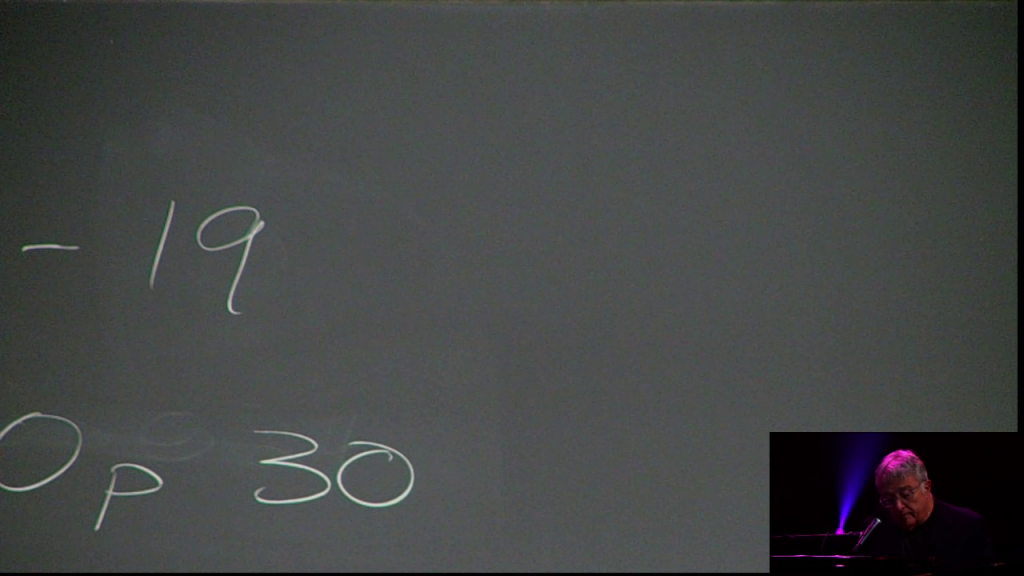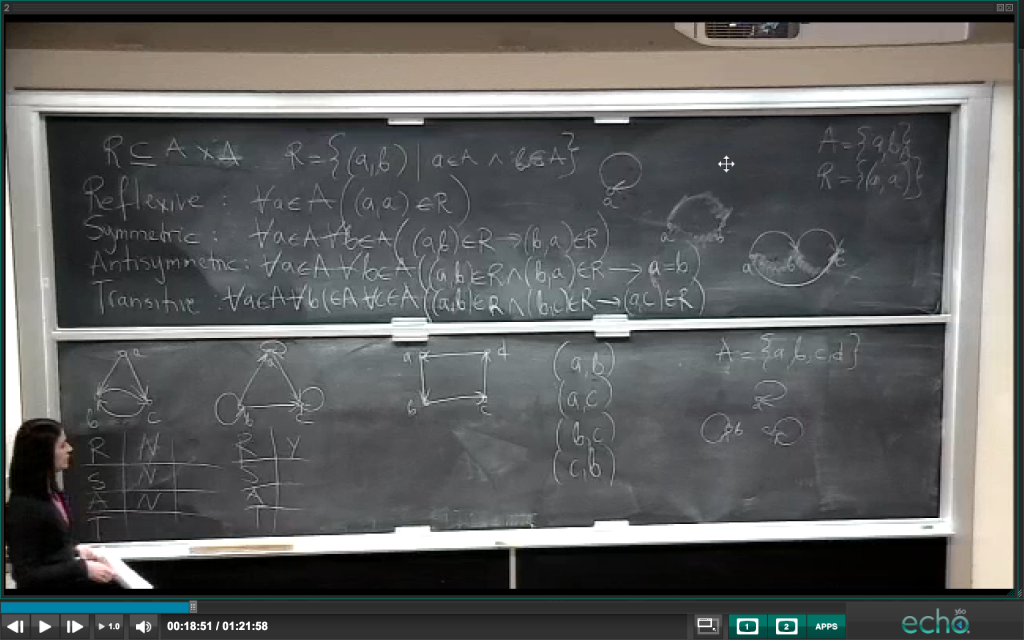In our lecture capture pilot, 2 of the instructors made extensive use of the chalkboard. Truth be told, many faculty still use them. If we want that to be useful for review we need a camera that can capture the detail on the board.
After getting over the shock of trying to use thousands of dollars and 21st century high-tech gadgets to capture a technology that has been in use for almost 500 years, the search began.

The best location for the camera is generally going to be along a line perpendicular to the chalkboard and vertically centered along the height of the chalkboard. Unfortunately we were installing these systems in rooms that are tiered pretty steeply. Mounting the camera on the back wall means you’re shooting down at the board. Side wall mounting is out due to the angles. The projector is pole mounted in the center of the room and I could pole mount the camera next to it but the angle is going to be steeper and now I might have some vibration wobble. (Mounting it on a desk is out due to cabling issues, possibility of tampering, and not being able to give up a seat in the room.
The least bad location is in the back of the room roughly centered with the board. Don’t you love making decisions like that? The camera is about 10 feet above the top of the chalkboard. The rear wall of the room is about 50 feet away from the chalkboard.
That gives us some requirements for the camera:
- Must be HD. (720p minimum otherwise we won’t be able to read the board)
- Must have zoom but PTZ is a plus.
- Due to our necessity to capture the blackboard, good low light performance is strongly desired. (Reduces visual noise.)
- We’d prefer to not have to have power installed at the camera mounting location since facilities requests aren’t cheap or fast.
- We’d like it to be accessible via a web page to allow remote control and monitoring.
- I’m not gonna spend more than $5K.
I got 5 out of 6. I’ll take it!
Go with what you know
I like to stick with vendors and products I have used in the past. Call me crazy. At Notre Dame we have some Sony and Vaddio cameras in use here on campus in a number of locations so we took a hard look at their products. Unfortunately the only Sony models in our price range that met our needs had a few issues.
- They would have required power installed in the back of the room.
- We’d need to run a coax cable since it was HD-SDI output. (I don’t know about you, but I just feel funny about running coax in 2014.
- SDI Output.
What was the nail in the coffin was that SDI output. The Echo360 takes a DVI input. What that meant was that I would need a converter to take the SDI signal and convert it to HDMI and then I’d use an HDMI to DVI cable. It’s completely reasonable but there were better options.
Vaddio makes a series of cameras with a 1U Camera Control Unit box that mounts in the lectern that allow really easy installation. You run 3 cat5e cables up to 500 feet in length and those 3 cables provide power and control and the third one sends video back to the CCU. No installing power at the camera.
The CCU unit provides simultaneous HD-SDI, HDMI and composite outputs. Eventually we may connect the CCU to our Crestron DMPS-300 and program the touchpanels to allow faculty to reposition the camera to various presets, possibly with a live preview on the touchpanel. The only thing they don’t provide is the ability to view and control the camera via the web. That’s something we can work around using the remote monitoring and preview capabilities of the lecture capture systems. Once they’re connected to the Crestron system, we can also use an XPanel (a virtual touchpanel) to remotely operate the touchpanel which would give us camera control. Not ideal but workable. Most of the time the camera will be in a fixed position so this shouldn’t be needed much.
It’s all just noise to me
When we ordered the 2 best Vaddio options available were the HD-19 and the HD-20. I think the HD-22 had been announced but was not shipping. The HD-20 has better resolution and a 20X optical zoom as opposed to 19X,but the low light performance was not as good. In the attached screen captures you can see the noise difference between the 2 units.


The lighting is the same, capture system is the same, both are set to 720p output. I tried to correct for all the variables possible.
To me there is simply no comparison. If you need to record a chalkboard and you don’t have studio quality lighting, the HD-19 is clearly a better camera. I’m not sure even studio lighting would make them comparable. I’d love to look at the H-22 at some point in the future and do another comparison since it’s supposed to have great low light performance. At a little over $4000, it’s not too expensive either when you consider the ease of installation and performance.
Here’s a shot from an actual classroom capture after it’s been run through the Echo360 encoding process. I’d say it’s more than sufficient.

We’re also evaluating the Zoomshot for areas where Pan and Tilt are not required. Annoyingly enough, the control box for that unit does connect to the network and allow a live preview and zoom and focus control. It also has a USB output so you can connect it to a PC and use it as a web cam. It also does streaming from the box.
Hopefully this is helpful to someone else looking to purchase cameras in the future. If Vaddio’s not on your list of cameras to eval, you’re making a mistake.
